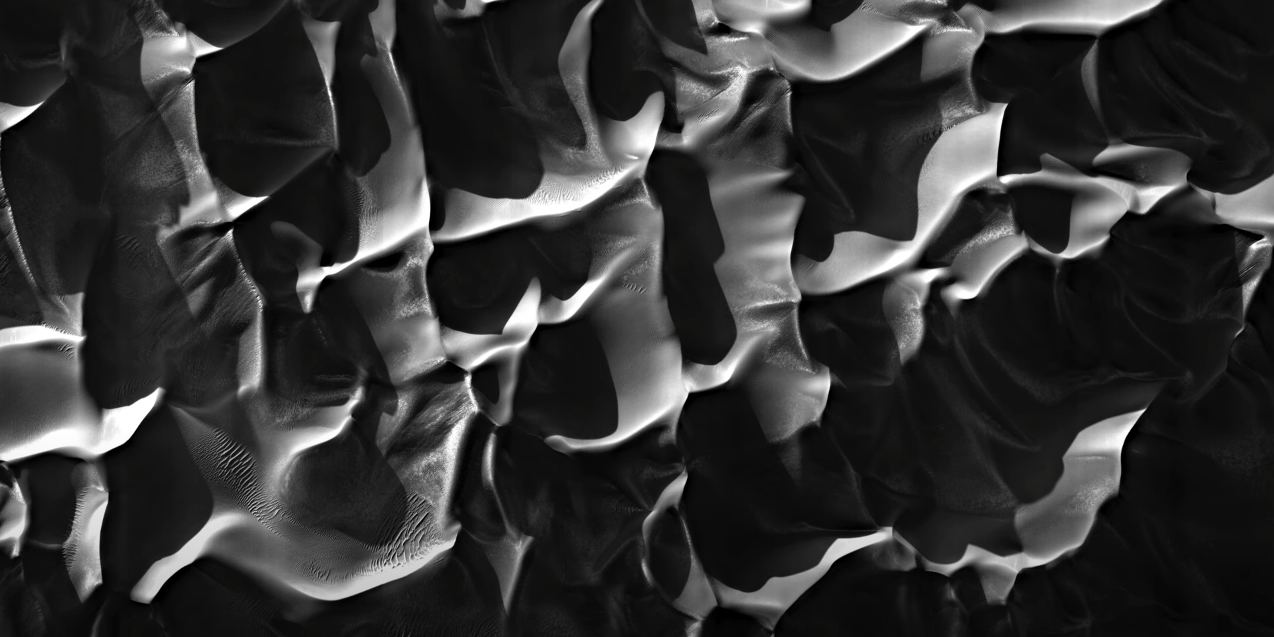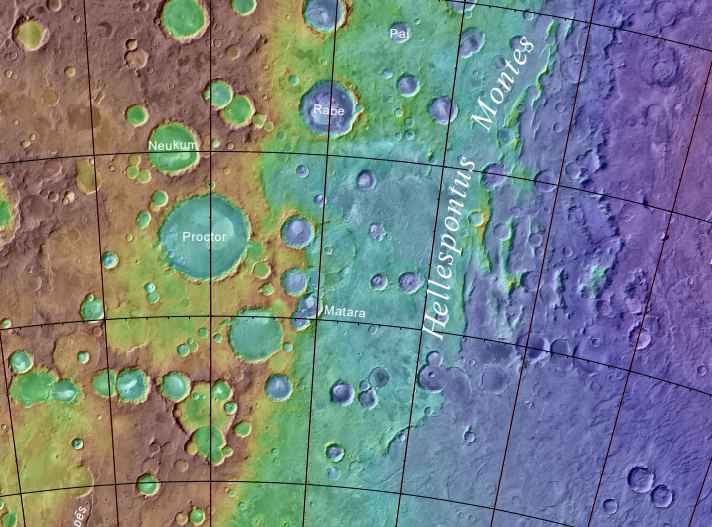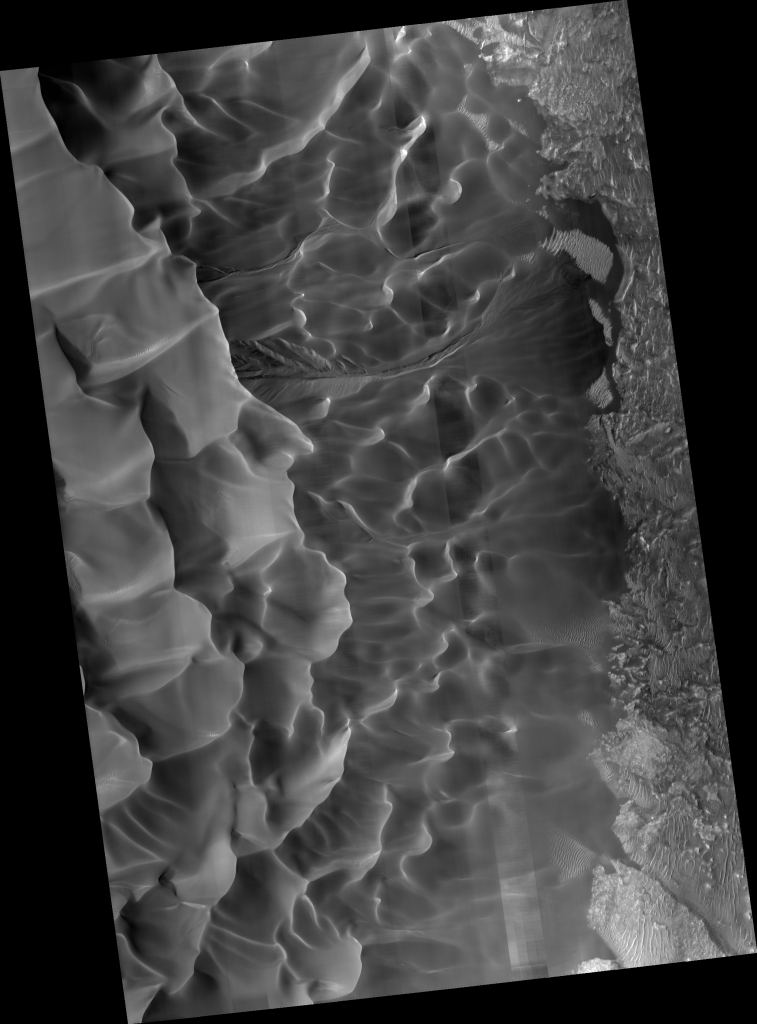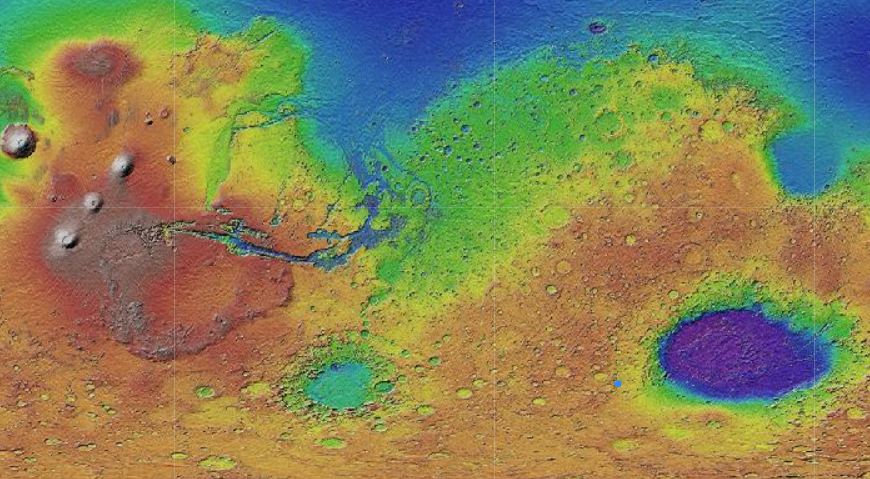Mars may be a cold, dry, dead world, but it’s still part of nature. As part of nature, it displays a sort of haunted beauty as only non-living forces shape its surface over long periods of time. It’s like a rocky-planet laboratory shaped by natural forces where interference from living processes is absent.
A new video from NASA highlights the haunted allure of the Matara Crater, a rather unremarkable crater among the more than 43,000 craters on Mars’ surface larger than 5 km in diameter. The video comes from the HiRISE (High-Resolution Imaging Science Experiment) camera on NASA’s Mars Reconnaissance Orbiter (MRO.) The still images that make up the video were taken from 251 km (156 mi) above the surface.

This is a screenshot from the flyover video of Mars’ Matara Crater created from HiRise data. Image Credit: NASA/JPL-Caltech/UArizona
The Matara Crater is only about 48 kilometres (30 mi) in diameter. But it’s intriguing because of its dunes and its undulating, textured nature. It’s named after a town in Sri Lanka.

This image shows the Matara Crater in context, with the massive, low-elevation Hellas Planitia impact crater to the right in blue. Image Credit: NASA/JPL/ASU/USGS
“Matara Crater is a favourite of ours to image owing to the massive and gorgeous sand sheet that dominates the floor. We often image these dunes for the gullies that form on them, some due to carbon dioxide ice,” NASA writes in the text accompanying the video.
The floor of the Matara crater is dominated by a massive sheet of sand. Mars’ relentless wind sculpts the top of the sheet into dunes, and the HiRISE camera has catalogued these changing shapes over time. There are more than 100 images of the dunes on the HiRISE website.
Dunes in Matara crater change as the seasons pass. Carbon dioxide freezes and melts and contributes to changes in the dunes. The HiRISE people highlighted these changes in a separate video a couple of years ago.
NASA didn’t build the HiRISE instrument and launch it into orbit around Mars on the Mars Reconnaissance Orbiter just for nice pictures of dunes. Dunes can reveal a lot about the planet’s past. Different sizes of dust grains tell scientists about the atmospheric conditions that deposited them. Dunes also contain information about the forces at work since their deposition. Taken together with other scientific observations of Mars, they help paint a picture of the planet’s history.
Some dunes even help us understand one of the largest issues on Mars: what happened to its water. China’s Zhurong rover found evidence in sand dunes near Mars’ equator showing that liquid water flowed there only 400,000 years ago.

This image of the Matara crater shows the sinuous elegance of its sand dunes. Image Credit: NASA/JPL-Caltech/UArizona
Sand dunes are intriguing targets for rover exploration, but they’re tough to navigate and hazardous for wheeled vehicles. NASA’s Spirit rover got stuck in the sand in 2010, and its mission ended. Scientists are busy working on other locomotion methods for rovers to traverse sand dunes without wheels. Instead, these rovers would have bodies that roll over the sand. One design is based on the Golden Wheel Spider from the Namib desert. It’s noted for its wind-assisted rolling capabilities that help it transit across dunes more easily. It uses its rolling action to avoid parasitic wasps.
FESTO has developed a prototype of a rolling robot based on the Cartwheeling Spider. On level ground, the robot moves twice as fast when in rolling mode. It’s called the BionicWheelBot.
Here’s the BionicWheelBot being tested in the Sahara Desert.
Rolling robots may never visit Matara Crater to explore its dunes. But at least we have the MRO and the HiRISE camera. Thanks to them, and the quality of the 4K video, we can dream about visiting it ourselves.

This image shows the location of Matara Crater in a global Mars context. Image Credit: USGS





